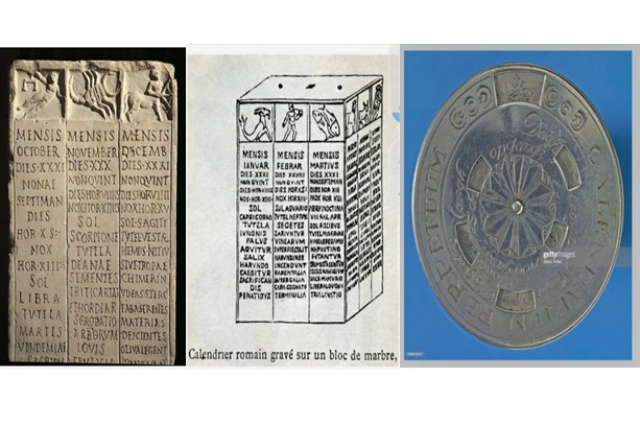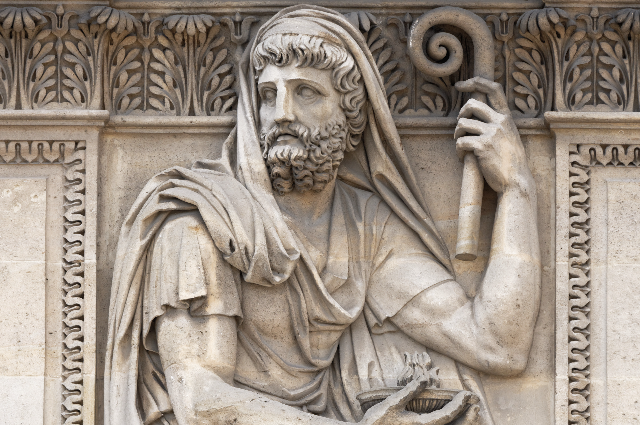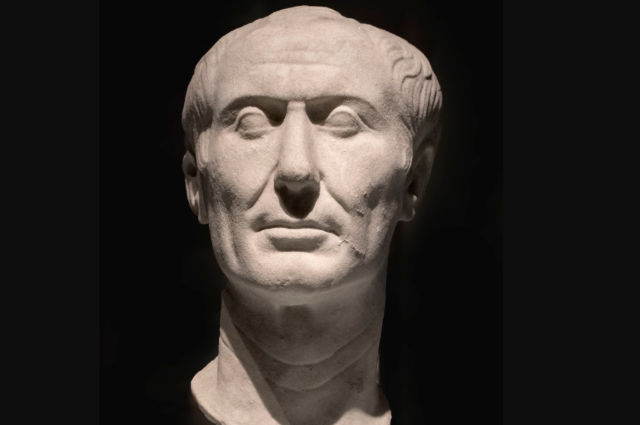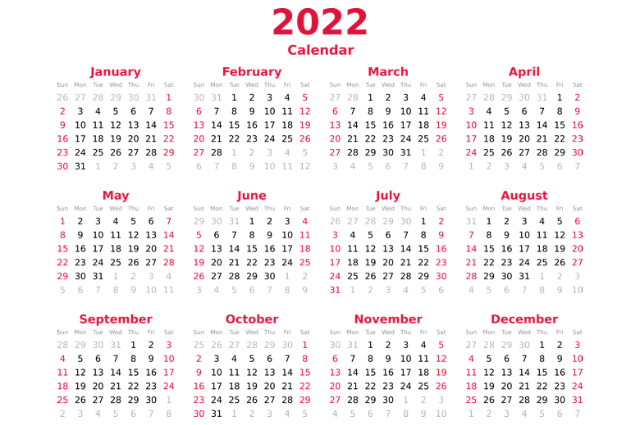
According to Collins, a calendar is a chart or device which displays the date and the day of the week, and often the whole of a particular year is divided up into months. The word ‘calendar’ is derived from the Latin calendarium “account book” or ‘kalendae’, the first day of the month in the Roman republican calendar when debts fell due and accounts were reckoned. The word is from Calare i.e. to announce solemnly or call out. In Rome, new moons were not calculated mathematically but were declared by the priests from the Capitol. It was the day on which future market days, feasts, and other occasions would be declared.
Antiquity of Calendars
The methods of timekeeping go back to the prehistoric age at least as old as the Neolithic. The Sumerian calendar is considered the earliest. However, a team of researchers found 12 large pits in Aberdeenshire, Scotland that mirrored the moon’s phases. These pits are estimated to be 10,000 years old. They are believed by some to be the oldest calendars in the world.
Concept of the New Year
The city of Babylon in ancient Mesopotamia or modern-day Iraq is credited to have the earliest record of instituting the concept of the New Year in 2000 BCE about 4,000 years ago. The New Year would be celebrated around the time of the vernal equinox in mid-March. The celebration would last for eleven days. Various other ancient cultures began their New Year on different dates. For over 3000 years ago the Persian New Year popularly known as Nowruz began in vernal or spring equinox on March 20 or 21. The Egyptians, Phoenicians, and the Greeks also started celebrating New Year much before the beginning of the Christian era.
Types of Calendars
There are different types of calendars including the solar calendar, lunar calendar, and lunisolar calendar. In a solar calendar dates indicate the season and the position of the sun relative to the stars. The first solar calendar is believed to have been developed by the Egyptians. They used a fixed point of the annual sunrise reappearance of Sirius colloquially known as Dog Star in the eastern horizon that coincided with the annual deluge of the river Nile. They first shaped a calendar comprising 365 days of 12 months of 30 days each with 5 days added at the end of the year. But their calendar was not perfect as they failed to account for the extra fraction of a day. Besides, the Julian calendar and Coptic calendar were also solar calendars. Solar calendars are of two types – tropical solar calendar and sidereal solar calendar. But a lunar calendar is based on the monthly cycles of the Moon’s phases. On the other hand, lunisolar calendars are basically lunar calendars. Additional intercalation rules to keep a rough synchronization with the solar year and thus with the seasons.

Roman Origin
However, the present New Year day is considered to have a Roman origin. The dating system evolved from the Greek lunar calendar. The Romans borrowed parts of their earliest known calendar from the Greeks. Romulus, the founder of Rome, instituted the calendar in about 738 BCE. It consisted of 10 months in a year of 304 days. The months were termed Martius, Aprilis, Maius, Junius, Quintilis, Sextilis, September, October, November, and December. Sixty-one and one-fourth days of mid-winter were evidently ignored. It was used by the Roman kingdom and Republic.
Reformations
- Numa Pompilius:

Source: Marie-Lan Nguyen/wikimedia
Numa Pompilius (753 – 673 BCE), the legendary second king of Rome, reformed the Roman calendar to create a 12-month year by adding January. In 452 BCE, February was inserted between January and March. But the lunar year comprising 355 days was full of confusion as it was ten and one-fourth days shorter than the solar year. Occasional intercalation of an extra month of 27 or 28 days called Mercedonius (from merces, meaning wages, since workers were paid at this time of year), as per direction of Numa Pompilius to make the calendar correspond approximately to the solar year confounded the matter to the point of extremity. As the Pontifex Maximus and the College of Pontiffs were the sole authorities, they whimsically reduced or extended the term of a particular magistrate or public official.
- Julian Calendar:

Source: wikimedia
Julius Caesar (100 – 44 BCE) brought about a drastic reformation and improvement on the ancient Roman calendar and introduced a solar-based calendar in 46 BCE. He decreed that the New Year would occur on January 1 because it contained the festival of the god of gates. The Roman republican calendar still contained only 355 days. January, April, June, August, September, November, and December were of 29 days; March, May, July, and October of 31 days, and February of 28 days. Being a lunar calendar, it was shorter by 10.25 days of a 365.25-day tropical year. Then an intercalary month was inserted between February 23 and 24. It consisted of 27 or 28 days that were added once every two years. The remaining 5 days of February were left out. Thus the intercalation was equivalent to an additional 22 or 23 days and in a four-year period, the total days in the calendar became (4x355) +22+23 = 1465 days. The average days per year were equal to 1465/4 or 366.25 days. However, due to irregular intercalations for different reasons, seasonal chaos resulted.
- Gregorian Calendar:

Source: Bartolomeo Passarotti/wikimedia
In October of 1582, the Gregorian calendar correcting slight errors in the Julian calendar was introduced and decreed by the papal bull inter gravissimas by Pope Gregory XIII. According to the Julian calendar, the length of a solar year was 365.25 days. But it was later found that a solar year is equal to 365.2422 days and 365.2424 days in tropical and equinox years. As a result, the Julian calendar missed nearly a day every 131 years. 10 extra days were omitted from October in the Julian calendar to adjust in the Gregorian calendar. Therefore, the day following October 4 on which the Gregorian calendar was adopted, was counted as October 15, 1582. Unlike a Julian calendar, all centurial years though divisible by 4 are not leap years. In that case, they should be divisible by 400. After protracted controversies, the Gregorian calendar was finally adopted by the Church. This calendar is also used in most parts of the world. However, the New Year on 1st January remained unchanged.
Adoption of Gregorian Calendar

The adoption of the Gregorian calendar was marked by a drastic change from traditional or old-style dating systems to the modern or new style dating systems in the modern history of most cultures and societies. Though some states embraced the new calendar from its inception, some other states refused to adopt it. On the other hand, a number of states preferred to stick to different civil calendars. Even both the old and new style calendars started being used for different purposes. If the former was used in religious contexts, the use of the later remained limited only for civil purposes. Therefore, it needed to refer to Old Style and New Style to indicate which calendar was followed for the confirmation of the date given.
Despite the solemn enactment of Gregory’s reforms of the Julian calendar, the papal bull gravissimas could hardly enjoy authority disregarding the Catholic Church and the Papal States. Naturally, Pope Gregory XIII had no formal authority over the changes to the civil authority. The changes he proposed necessitated adoption by the civil authorities in each country to have a legal effect.
Conclusion
Though the bull became the canon law of the Catholic Church in 1582, Protestant Churches, Eastern Orthodox Churches, and a few others refused to give recognition to the changes. The confrontation became explicit when the Gregorian calendar introduced new laws to fix the date of Easter and related holidays; they were celebrated by different Christian churches on different dates. Today, the Gregorian calendar is widely accepted all over the world and 1st January is celebrated as the New Year.
